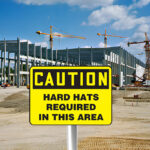Regulatory signs are all around us. But if you don’t happen to know them by that name, you could be in the dark about what they are. (Unless, perhaps, you’re a teen studying for your driver’s test). Yet once you know what they are—you’ll realize that you encounter them regularly.
Take a moment to reflect on the most recent time you drove. Perhaps this morning or maybe yesterday. Did you stop at a stop sign or check for oncoming traffic at a yield? Did you note whether you needed to slow down for a school zone because you were within the school hours time slot? Did a no smoking sign catch your eye as you went about daily business in your town or city?
Regulatory signs – what they are
True to their name, regulatory signs regulate behavior. They tell you what you can and can’t do. Broadly, they give you these instructions for driving and for being in some public areas. For instance, when driving, one iconic octagonal regulatory sign alerts you to STOP at intersections. Another regulatory sign warns that if you park in a certain area, your vehicle may be towed—the “Tow Away Zone” plaque.
Regulatory signs – why they exist
You could say that living in a civilized society entails having a group of people bound by the same rules. And that’s actually part of the function of regulatory signs. If a hundred drivers need to use a given intersection in a 10-minute period, it’s not going to work unless some kind of order is imposed. Structure and rules aren’t just structures that bind us and make us miserable. They’re the bedrock of a functioning society.
Once you have some do’s and don’t to impose order on that intersection, all 100 drivers can indeed get through and move on to their destination. And that’s where regulatory signs come in—they communicate the rules that regulate that intersection. When drivers see them, they take appropriate action. Consequently, a large volume of individual vehicles and drivers can travel our highways and byways effectively.
Regulatory signs – who comes up with them
Obviously, with a name like “regulatory sign,” it stands to reason that these signs have some sort of authoritative value. They’re not mere recommendations. And when you have a sign whose message must be followed, it makes sense that there’s authority behind that sign. Here, we can trace it back to the Federal Highway Administration (FHWA) and the Code of Federal Regulations (CFR).
All good rules need to be written down somewhere (well, many of them anyway). And the rules for regulatory signs are no different. They find their home in the Manual on Uniform Traffic Control Devices for Streets and Highways. (It’s also known as the MUTCD—we’ll call it that from here on out, for simplicity’s sake).
And as we help you sift through the relevant regulatory sign information, that’s our guidebook. Let’s take a look at the exciting rules it offers.
Regulatory signs – why you need them
Of course, we scratched the surface of the “Why?” question a moment ago with our intersection example. Regulatory signs exist in part to make ours a livable and convenient civilized society. But there is another reason. And it’s the equivalent of the “Big Boss” saying “because I said so.”
Here it is—straight from the Electronic Code of Federal Regulations.
Now, there are places where these rules do not govern. And there may be exceptions granted, too. However, both of those are outside the scope of today’s article. So, while we won’t be dealing with places these rules don’t apply, just know that they exist.
Two reasons you need regulatory signs
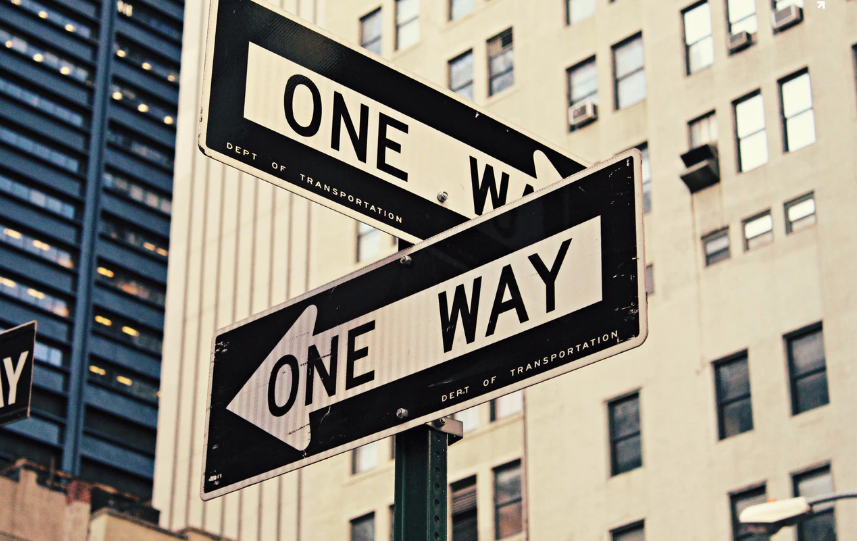
So you see there are really two reasons you need regulatory signs. First, because the government says so. Second, because they help a large number of people function together well in shared spaces. You could call the first one the hard reason and the second one the soft reason if you like. Nevertheless, they’re two very good reasons.
Shape of regulatory signs
According to Chapter 2B of the MUTCD, “Regulatory signs shall be rectangular unless specifically designated otherwise.” However, as we well know, not all signs are rectangular—like the octagonal stop sign or triangular yield sign. For specific dimensions of a given sign, scroll down to “Regulatory sign specifications.” There, you’ll discover where to find measurements for your signs.
Color of regulatory signs
The MUTCD even identifies the colors that are acceptable for use on regulatory signs. They list 13 and link most of them to certain meanings. However, two colors (coral and light blue) don’t yet have meanings assigned.
Here are the colors for regulatory signs as, lifted from the MUTCD:
Appearance of regulatory signs
In addition to the color legend above, the MUTCD also offers guidance for the reflective appearance of signs. Generally speaking, they need to be “retroreflective or illuminated” according to Section 2B.01. You can learn more about what that requirement means in the section Retroreflectivity and Illumination.
Regulatory sign specifications
The MUTCD provides an extensive list of regulatory signs. They list a given sign’s alphanumeric designation. And they add the dimensions the sign should be depending on where it will be placed. They also provide a link to the relevant section of the MUTCD that provides a deeper description of the sign’s specification. (Which saves you from having to scroll through the entire document to find the sign you’re wondering about).
If you need instructions for a particular sign, this is definitely the place to start. Take a look at it—it’s Table 2B-1. Regulatory Sign and Plaque Sizes. If you know the name of the sign type you’re looking for, you can scan the left column until you find it. And if you don’t know what the sign type is called, simply search through the column until you find something that sounds like it may be what you need. Then, you can dig deeper to see if it will indeed fit the bill.
12 Regulatory signs you may recognize
Let’s take a look at some regulatory signs you might be familiar with. And if you need to construct one, we’ll also send you in the direction of more information. As you read on, note just how ubiquitous signs are in our neighborhoods and all over the U.S.
Do not pass signs
Often, passing is a way to keep traffic moving along quickly and smoothly. However, passing isn’t always safe. Nor is it always allowed. Enter Do Not Pass signs.
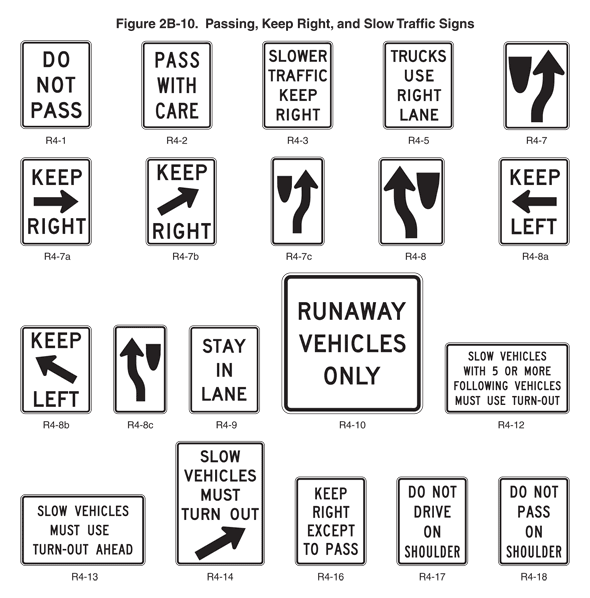
- See it: Take a look at what signs restricting passing can look like. And you’ll also get a glimpse of signs that direct motorists to stay left or stay right & more.
Fines signs & plaques
You’ve seen them before—the signs that warn you that you can be fined for exceeding the speed limit in an area.
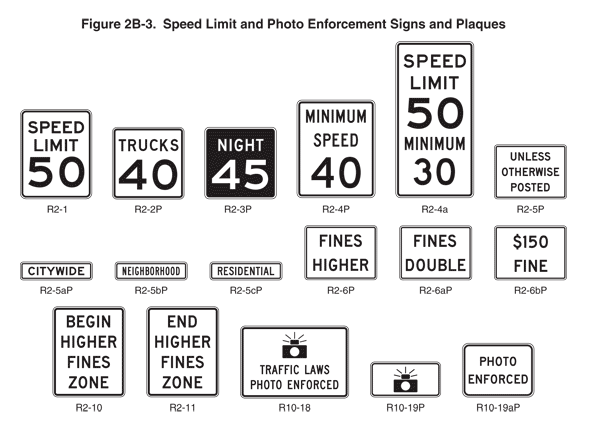
- See it: Need a visual for these signs? Check out what signs & plaques alerting you to fines can look like.
No hitchhiking signs
Sometimes, pedestrians are allowed to request rides from passing motorists. However, this isn’t allowed everywhere. Which explains why no hitchhiking signs might be needed.
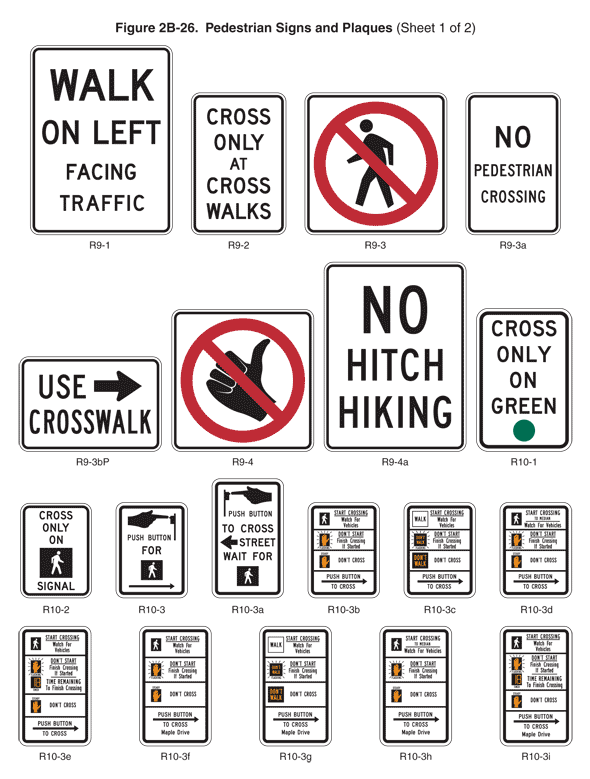
- See it: Take a look at these images to understand what no hitchhiking signs look like. (And check out the other pedestrian signs while you’re at it).
No parking signs
Turns out there are a whole host of ways to use signs to prohibit or limit parking. And it makes sense because a parked vehicle could present a semi-permanent obstacle when parked in an inconvenient location. Those who are blocked by the improperly parked vehicle have limited options. For instance, they may be forced to wait until the owner returns or until the vehicle can be towed.
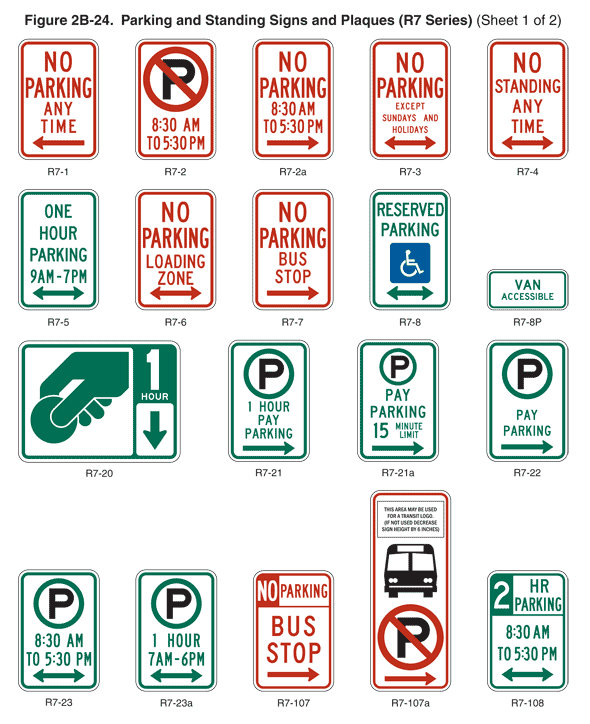
- See it: Get a feel for what signs that limit or exclude parking could look like. (And view more signs limiting parking here, too).
No turn on red signs
As a driver, you know how helpful the freedom to do a right turn on red can be. It could get you to your destination a little faster as it can eliminate the time spent waiting for a green light. However, turning on red isn’t always allowed. Which means sometimes we need signs prohibiting turns to make that clear.
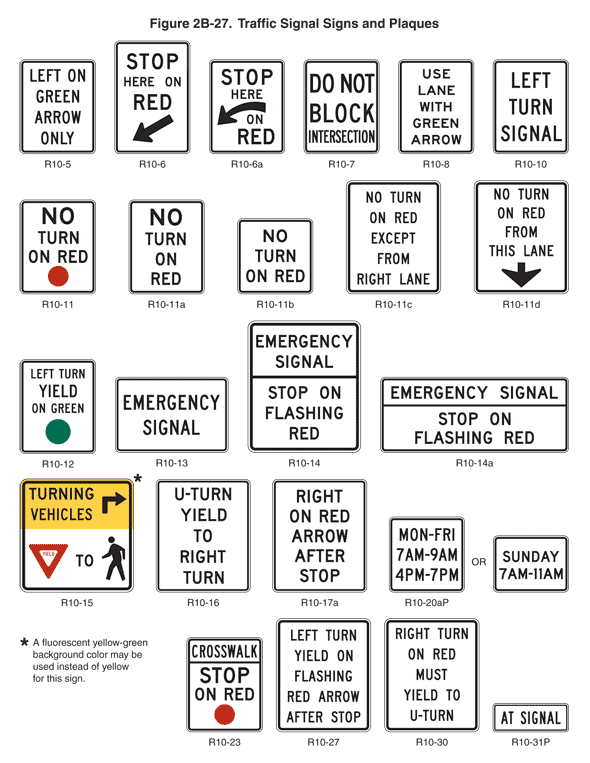
- See it: Actually, there are quite a lot of signs that restrict turning. Get an idea of what no turning signs can look like.
Road closed sign
A road closed sign is a disappointing sign to encounter unexpectedly. Yet, it’s vital if it’s keeping drivers away from an unsafe stretch of road.
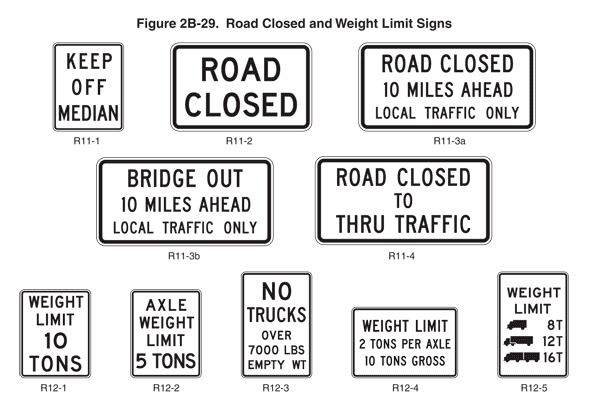
- See it: Take a look at road closed signs.
Roundabout signs
Roundabouts are an effective way to handle a convergence of roads. Instead of having to stop (as at a stop sign) motorists have to yield the right of way if other cars are already in the roundabout.
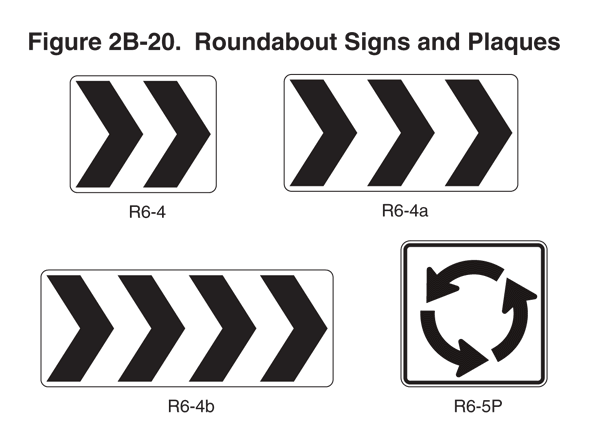
- See it: Here’s what roundabout signs can look like.
Selective exclusion signs
Here are some big words for a pretty simple concept. Basically, selective exclusion signs tell certain vehicles, “You can’t drive here.” Generally, we think of public roads as being for everyone. And they are, for the most part. However, sometimes authorities do have to restrict access.
For instance, some roads are off-limits to pedestrians, equestrians, bicyclists, and/or roller skaters. Plus, some roads aren’t open to commercial vehicles. Ironically, some roads or paths are not for motor vehicles.
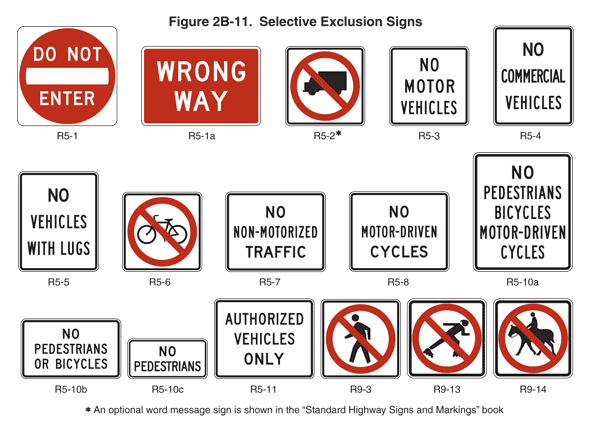
- See it: Get an idea of what selective exclusion signs can look like.
Speed limit sign
We see speed limit signs regularly while driving. Even so, they’re easy to miss, leaving drivers wondering just how fast they’re supposed to be going.
- See it: Take a closer look at what speed limit signs look like.
Stop or yield for pedestrian signs
Signs noting how drivers must act toward pedestrians can have different terminology. Either way, they have important work to do reminding drivers to give pedestrians the right of way. (And to leave a safe amount of space when doing so).
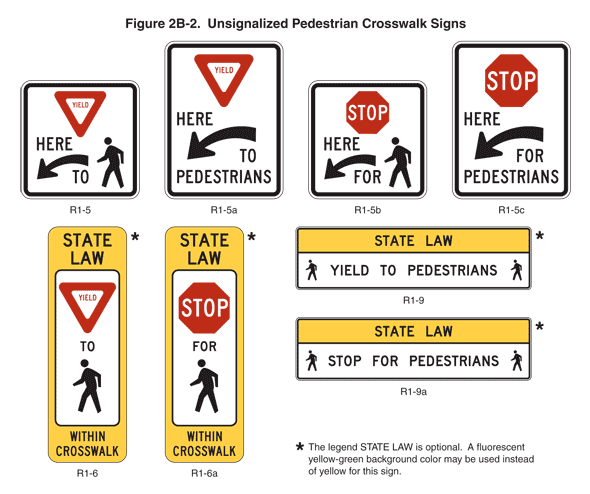
- See it: Take a closer look at pedestrian signs with this figure.
Stop sign & yield sign
Both stop and yield signs can have supplemental signs mounted underneath. For instance, that could look like a stop sign with a sign below that says “Except right turns.”

- See it: Check out this figure if you need to visualize the signage we’re talking about.
Weight limit signs
Now here are some useful signs that help vehicles stay within safe weight parameters. While it could be frustrating to discover that your vehicle exceeds the safe weight for using a certain roadway or structure, the alternative is worse. Using a road for which your vehicle is too heavy could have dangerous repercussions.
- See it: Get an idea of what weight limit signs can look like.
Our very own “caution sign”
When it comes to purchasing and placing regulatory signs, take care to understand and follow applicable guidelines. Do your own due diligence. If the job is yours, take responsibility to determine what signs you’re required to have and where.
Procure and place signs
Once you know what regulatory signs you need, you’ll need to find a source for procuring them. If you’re looking for a local source, check with a good sign company in your area to see if they do regulatory signs. Or perhaps you’ve discovered that regulatory signs are not what you’re actually looking for. Wondering what type of sign you do need? Check out A Glossary of Sign Definitions & the Distinctive Features of Each.




